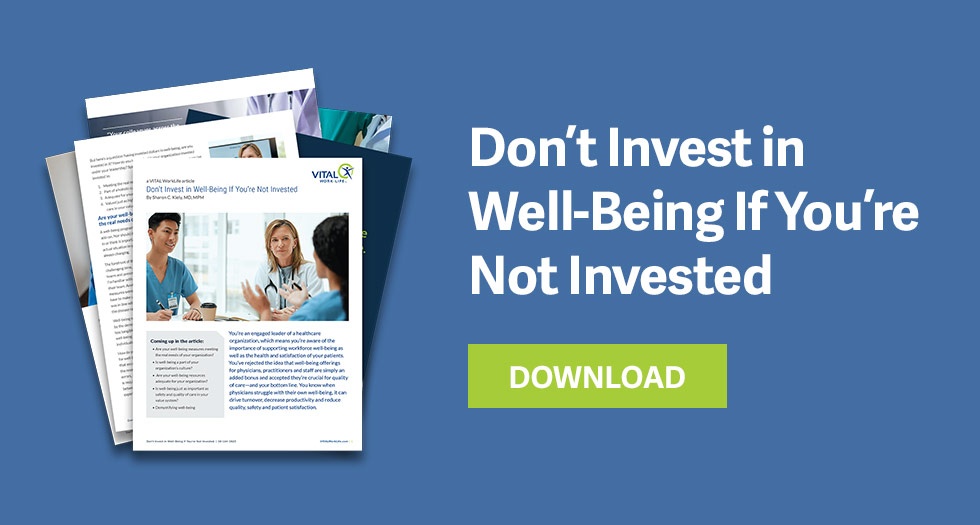If you understand the pressures the medical workforce labors under today, you recognize the need to support the well-being of physicians and those working in medicine. You grasp the reputational and bottom-line arguments for heading off burnout and the negative results of those pressures. In short, you realize in many different ways you can’t afford not to take measures to promote the well-being of the givers, as well as the receivers, of care.
But are the measures you’re taking the right ones? And are they part of a whole-hearted commitment?
VITAL WorkLife Physician Peer Coach Sharon C. Kiely, MD, MDM, FACP takes a close probing look at the difference between merely investing in well-being and being truly invested in it. It’s the difference, she writes, between thinking that you know what physicians need and actually asking them, then listening and responding. It’s the difference between running an under-resourced program and a robust one. And it’s the difference between merely adding a program and integrating it into a top-to-bottom commitment to well-being that is as important a part of organizational culture as patient safety or financial awareness.
She addresses the still-prevalent confusion about what well-being actually is, a confusion that can lead to measures that fall short of real needs. And she recommends that leaders get the professional advice and help they need to “demystify” well-being—because understanding and supporting it is a skill set that all medical leaders will need to develop in the years ahead.



